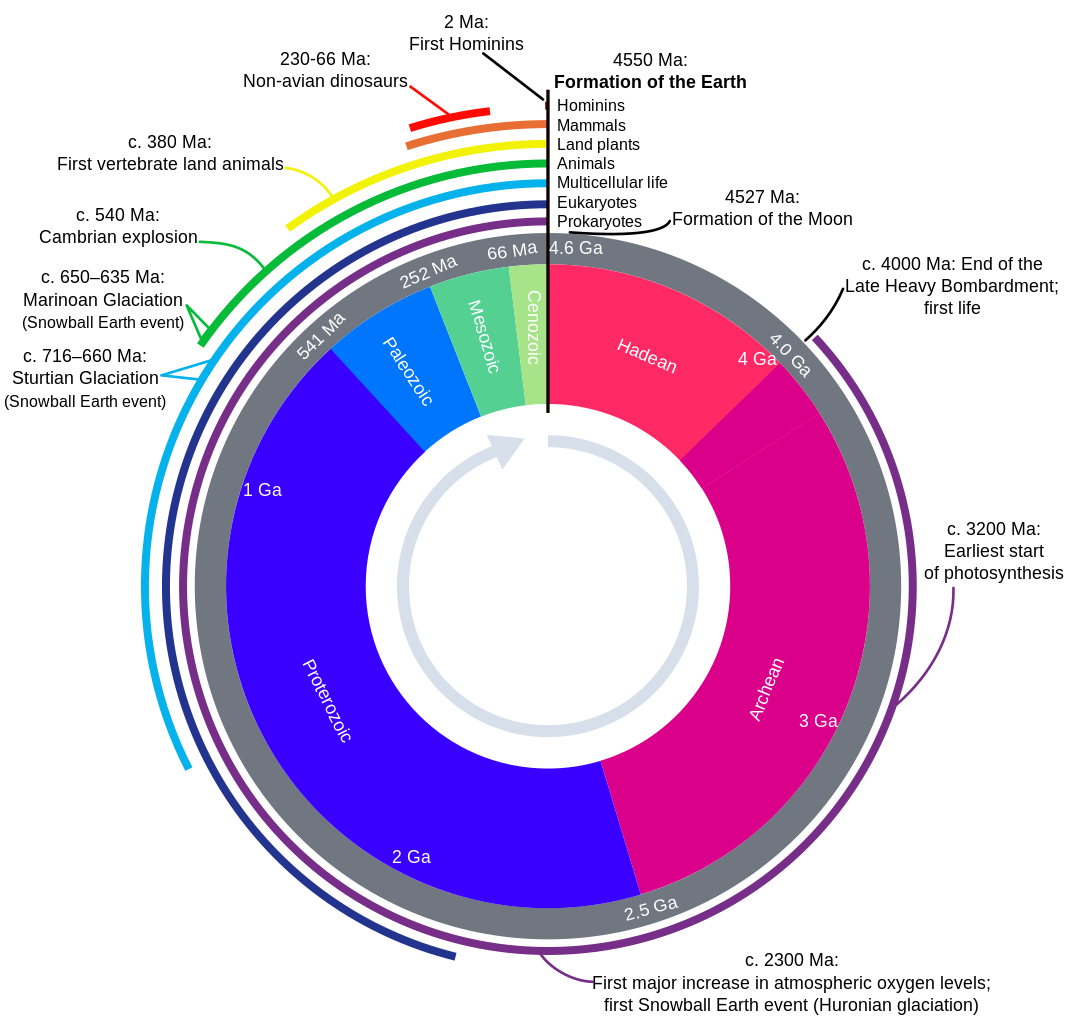7.1 The Geologic Timescale
The Geologic Timescale
Geologic History considers the timescales of millions or even billions of years! This is much longer than other histories which consider events that occur on hundred- or thousand-year timescales. We measure units of geologic time in “Ma” which stands for “Mega-anon”. 1 Ma is 1,000,000 years. Sometimes, you will also see Ga (“Giga-anon” or 1,000,000,000 years) and Ka (“Kilo-anon”, or 1,000 years).
Below is the Geologic Timescale, the way in which Geologists have organized Earth’s history. There are the largest units of time called the Eons, which divide up Earth’s history generally into the Phanerozoic (the time of animals and plants) and the Precambrian Hadean (Earth’s early formation days), Archean (the time in which life formed), and Proterozoic (the time of early life). These are further divided into Eras, which are divided into periods, which are still divided further in Epochs. Geologists do this to be precise about the time in which a geologic event occurs.

Earth History at a Glance
In this chart below, you will find some of the exciting events that first happened on the Earth throughout its 4.55 Ga history. Take note of where hominins, the family of humans, first appear in that history! We are extremely young on the planet.

Watch the video below for the story of life through Earth’s history!

